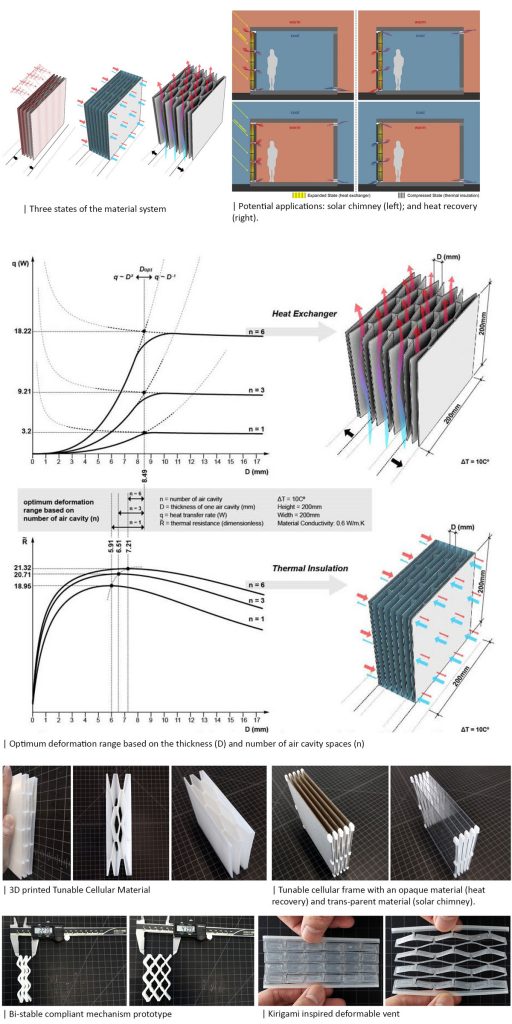This research investigates a tunable cellular material system that can alternate between a thermal insulator and a heat exchanger. The capability to morph between these two distinctive thermal functions provide opportunities to create novel material systems that can dynamically adapt to its environment. The operating principle is to strategically deform the cellular material so that the shape and size of the cavities are optimized for the intended thermal function. In the compressed state, the cavity spaces are narrow enough to suppress convection heat transfer and utilize the low thermal conductivity property of still air. The expanded state has the optimum cavity dimensions for air to move through the system and exchange heat with the material system. The first stage of the research utilizes the existing thermal optimization studies for establishing the analytical model for predicting the performance of each state as a function of the geometric features. The second stage constructs a parametric model using the predictions, and two separate material architectures were designed and fabricated based on it. The calibrated analytical model can be utilized in designing various dynamic thermal interaction systems at a wide range of conditions and parameters (e.g. climate, temperature, scale, and material).
Tunable Cellular Materials
SPONSOR
- Syracuse Center of Excellence
- Syracuse School of Architecture
DISSEMINATION
- 17th Annual New York State Green Building Conference, 2019 Platform presentation, “Ordinary Materials, Extraordinary
- Geometry.” Emerging Technologies in Architecture, AIA CNY, Everson Museum of Art, 2018
- Lecture title: Smart Material vs Smart Geometry
- 2018 Bio Digital Architecture Seminar, Yonsei University, South Korea
- Lecture title: Engineered by Design
- Best Paper Award, Proceedings of the 23rd International Conference of the Association of Computer-Aided Architectural
- Design Research in Asia (CAADRIA), Beijing, China, 2018
- Park, Daekwon. 2018. “Tunable Cellular Materials for Adaptive Thermal Control.” Proceedings of the 23rd International Conference of the Association of Computer-Aided Architectural Design Research in Asia (CAADRIA), Beijing, China

